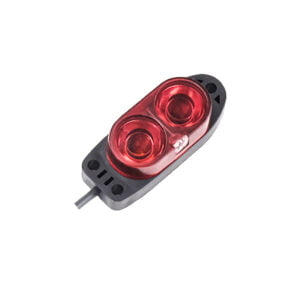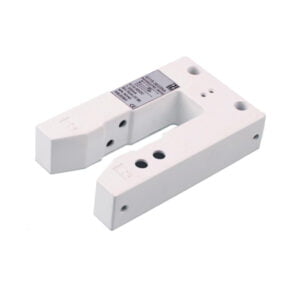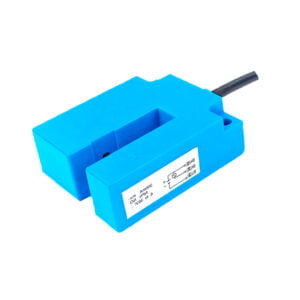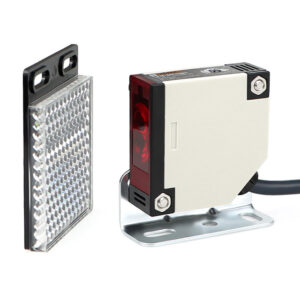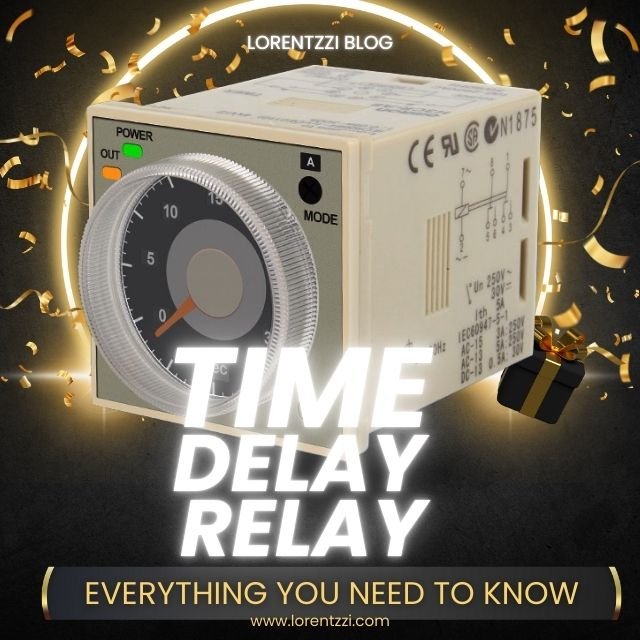In this article, we will explain the photoelectric sensor applications in five aspects, including the food and beverage industry, automotive industry, mechanical engineering, material handling, and pharmaceutical industries.
Table of Contents
What are photoelectric sensors?
-
Miniature Photoelectric Sensor
Photoelectric Sensor -
Slot Type Photoelectric Sensor
Photoelectric Sensor -
G65 Photoelectric Slot Sensor
Photoelectric Sensor -
E3JK-R4M1 AC/DC Retroreflective Photoelectric Sensor
Photoelectric Sensor
Photoelectric sensors are new non-contact switches that use light to detect the presence or absence of targets within their sensing range. The light source can be infrared light or laser. The detection distance of laser photoelectric sensors is much longer than that of infrared sensors because the laser energy is stronger and can be transmitted over long distances.
Advantages and disadvantages of photoelectric sensors
Advantages:
- No contact with the measured object: The photoelectric sensor uses the reflected light from the detected object to monitor, so they will not touch the measured objects.
- High precision and fast response time: As we all know the speed of light in the air is around 299,705 kilometers per second, which means the photo sensor has fast response time.
- Long detection distance: For the through-beam photoelectric sensors, their detection distance can reach several meters to tens of meters.
- Detecting any material: Whether the target material is transparent or opaque, photoelectric sensors can handle it with ease.
Disadvantages:
- The environment should be very clean and free of frogs or dust.
- Regular maintenance is required.
- Not friendly to newbies or non-experts.
- High price: If we compare photoelectric switches with conventional contact switches or micro switches, you will find that the price of photoelectric switches is higher.
Photoelectric sensor applications
1. Food and beverage

If you’ve ever visited a food or beverage factory, you’ll notice that the photoelectric sensors can be found around every corner. They are widely used for precise packaging and labeling to ensure products are correctly positioned and labeled on the production line.
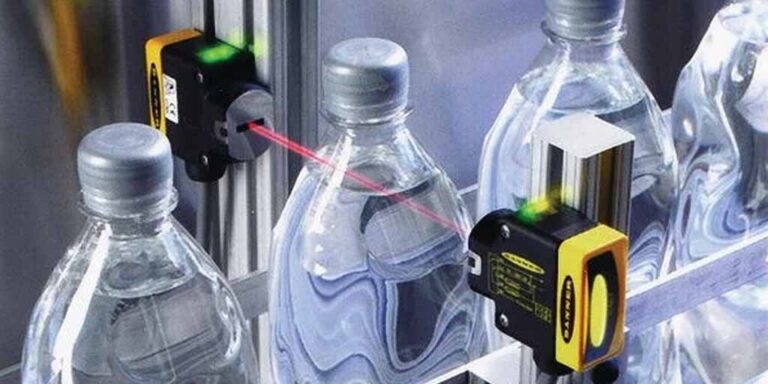
Another application is bottle fluid level control. When the bottle passes the photoelectric switch on the conveyor belt, if the liquid level is not up to setting value, the photoelectric switch will open the faucet to ensure the consistency of the filling level and prevent overflow.
2. Automotive

Photoelectric sensors are also widely used in the automotive industry. As we all know, car factories always have many production lines and a car has many parts. Photoelectric sensors can be used to count cars to monitor daily production, and can also be used to identify defects in car parts, helping to produce high-quality cars.
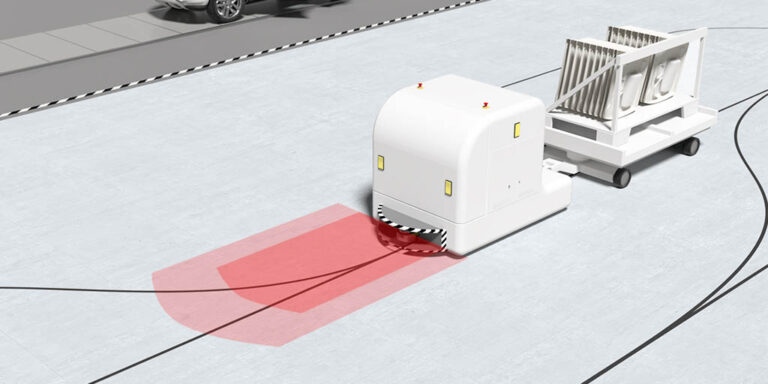
Automatic Guided Vehicles (AGV): In automated warehouses and manufacturing plants, AGVs use photoelectric sensors for navigation and obstacle detection to improve the safety and efficiency of material transportation.
3. Machine engineering
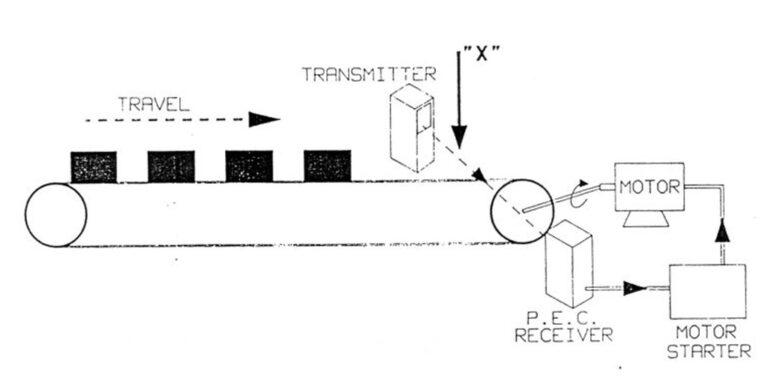
Conveyor belt control: As shown in the figure above, we can control the movement of the conveyor belt through through-beam photoelectric sensors. As soon as the carton on the conveyor blocks the light between the transmitter and receiver, the sensor activates its output and stops the motor. When the carton leaves, the sensor activates the motor, causing the conveyor belt to run again.

Part Presence Detection: Photoelectric sensors are used to detect the presence of components during the manufacturing process, preventing errors and improving overall efficiency.
4. Material handling
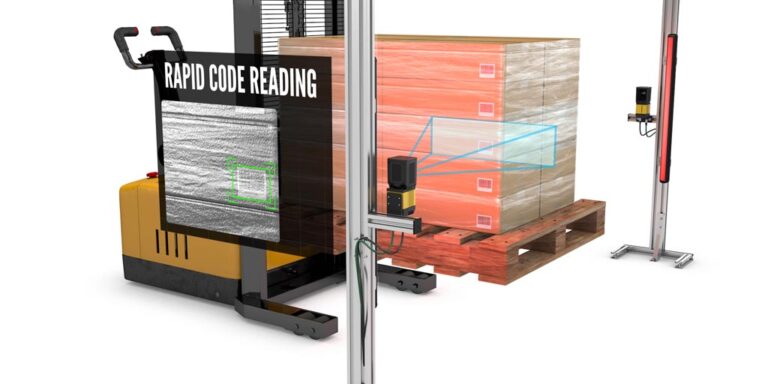
Palletization: Photoelectric sensors assist in palletization processes by accurately detecting and aligning pallets, streamlining warehouse operations and logistics.

Package Counting: These sensors are employed for counting packages on conveyor systems, ensuring accurate inventory management.
5. Pharmaceutical

Capsule and Tablet Counting: In the pharmaceutical field, statistics on the number of drugs produced daily is particularly important. It can understand the daily production status and formulate reasonable production plans. Photoelectric sensors and counters can be used together to count the number of tablets or capsules produced. It provides an important basis for pharmaceutical companies to improve efficiency.
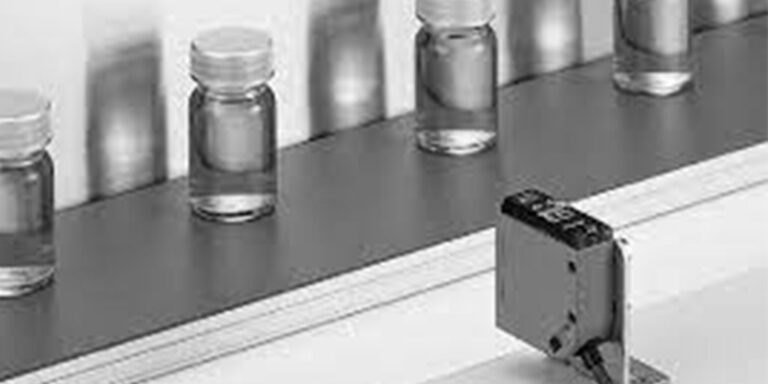
Liquid Level Monitoring:In addition to tablets and capsules, pharmaceuticals also include liquid medications. Similar to the previously mentioned beverage liquid level detection, photoelectric switches can also be used to detect the liquid level in liquid medications. This helps screen out substandard products, enhancing the quality of the produced liquid medications.
Conclusion
The photoelectric sensor applications are not only in the food and beverage, automotive, mechanical engineering, material handling and pharmaceutical industries, but also as a process instrument in other areas of industrial automation.
Lorentzzi can provide solutions for all your applications in photoelectric sensors, send us your inquiry today to get our solutions!


